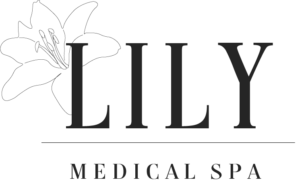Introduction
Air travel involves exposure to reduced oxygen levels at higher altitudes, which can pose challenges for individuals with certain medical conditions. Oxygen therapy is a crucial consideration for those who require supplemental oxygen to ensure their safety, comfort, and well-being during flights.
Understanding Altitude Challenges
As an aircraft climbs to higher altitudes, the air pressure decreases, leading to lower oxygen levels in the cabin. While commercial airplanes are pressurized to simulate lower altitudes, the partial pressure of oxygen is still lower than what individuals experience at ground level. This can be problematic for passengers with respiratory or cardiovascular conditions.
Pulmonary Function and Hypoxia
Individuals with compromised lung function may experience worsened symptoms due to reduced oxygen levels during air travel. Hypoxia, or inadequate oxygen supply to body tissues, can lead to shortness of breath, fatigue, and dizziness. Oxygen therapy becomes essential to maintain proper oxygenation.
Use of In-Flight Oxygen
Airlines provide in-flight oxygen for passengers who require supplemental oxygen during the flight. Passengers must inform the airline in advance and provide medical documentation supporting their need for oxygen therapy. The airline’s medical department or a designated service can assist with arranging in-flight oxygen.
Portable Oxygen Concentrators (POCs)
Many airlines allow the use of approved portable oxygen concentrators (POCs) during flights. POCs are compact devices that extract oxygen from the air and deliver it to the user. Passengers must comply with specific airline guidelines and receive approval for using POCs during the flight.Altitude and Decompression RiskIn addition to reduced oxygen levels, altitude increases the risk of decompression sickness, also known as “the bends.” This is a concern for passengers using oxygen therapy, especially if flying shortly after diving or exposure to high altitudes. Individuals using oxygen therapy should discuss their travel plans with healthcare providers to ensure safe air travel.
Private Aviation Considerations
For those traveling on private aircraft, oxygen availability depends on the altitude reached. Small non-pressurized planes may require supplemental oxygen for passengers, particularly during flights at higher altitudes.
Consulting Healthcare Providers
Individuals using oxygen therapy or with specific medical conditions should consult their healthcare providers before air travel. Medical professionals can evaluate the patient’s health status, provide recommendations for using oxygen during flights, and ensure that travel plans align with their medical needs.
Booking Early and Notifying Airlines
Passengers requiring oxygen therapy should book flights early to secure in-flight oxygen or POC approvals. Notifying the airline about oxygen requirements well in advance ensures proper arrangements are made and prevents any last-minute complications.
Travel Insurance and Documentation
Travel insurance can offer peace of mind for passengers with medical needs, including oxygen therapy. Having all necessary medical documentation, prescriptions, and approvals readily available can expedite the process at the airport and ensure a smoother travel experience.
Conclusion
Oxygen therapy plays a vital role in addressing the challenges of air travel and altitude-related issues. By working closely with healthcare providers and airlines, passengers can ensure their oxygen needs are met during flights, allowing them to travel safely and comfortably while enjoying the benefits of modern air transportation.

